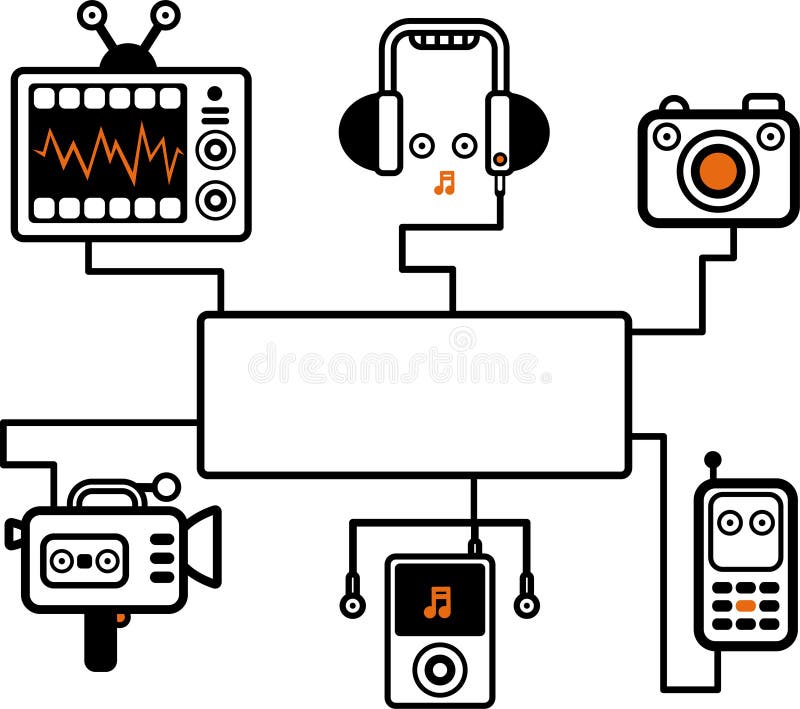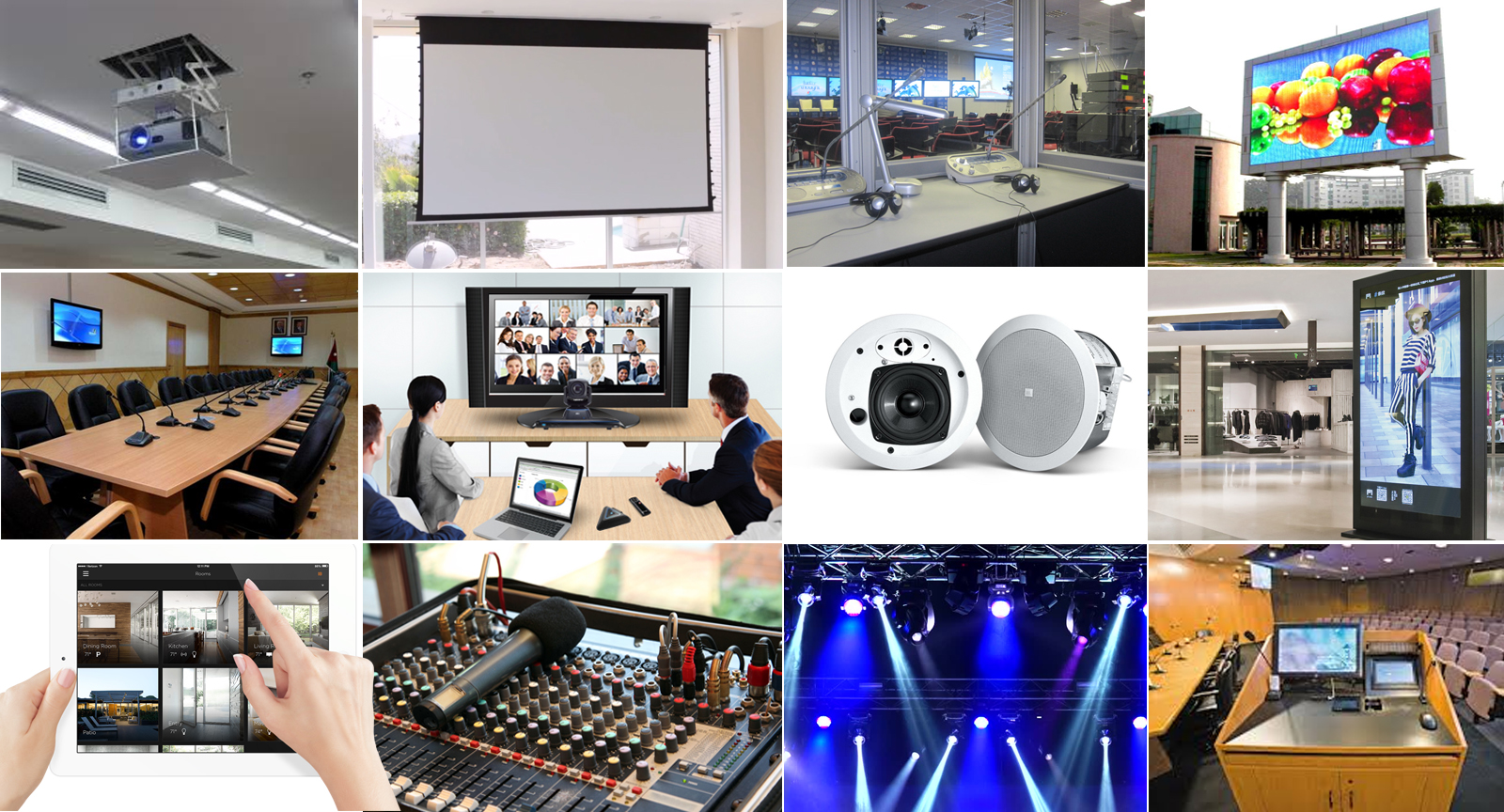The mistakes to avoid when working with audio visual charlotte nc
Wiki Article
Recognizing the Incorporation of Audio Visual Technology in Today's Educational Environments
The integration of audio-visual modern technology in instructional settings has actually transformed the training and finding out procedure. Educators currently have access to devices that accommodate various finding out styles, boosting trainee engagement and cooperation. Nevertheless, the unification of these modern technologies presents both opportunities and difficulties. Comprehending how to efficiently implement these devices is crucial. What approaches can teachers utilize to take full advantage of the benefits of audio-visual modern technology in their class?The Development of Audio-Visual Innovation in Education
As academic demands evolved over the decades, audio-visual technology went through significant makeovers that reshaped the learning atmosphere. Initially, devices such as film projectors and slide programs were the main methods of incorporating visual components right into class. These very early technologies provided educators with the ability to existing information dynamically, yet they were restricted in availability and interactivity.With the development of videotape recorder in the 1970s, class began to integrate documented lessons, expanding the range of academic sources. The introduction of computers in the 1980s additional changed this landscape, enabling the production of multimedia presentations and interactive discovering experiences.
The rise of the internet in the 1990s noted a zero hour, enabling real-time access to a riches of audio-visual materials. Today, electronic devices such as interactive whiteboards and online understanding systems remain to improve the academic experience, promoting interaction and collaboration amongst students.
Advantages of Audio-Visual Equipment for Diverse Discovering Styles
Audio-visual tools play a necessary duty in satisfying diverse learning designs by improving visual understanding and enhancing acoustic interaction. By including pictures, videos, and noise, these innovations produce a more comprehensive instructional environment. This multifaceted method permits teachers to address the diverse preferences and needs of pupils effectively.Enhancing Visual Understanding
Interaction in the understanding process is markedly improved via using audio-visual tools, catering to different learning designs. These devices, such as video clips, infographics, and interactive discussions, provide aesthetic stimulations that aid understanding and retention. Visual students, in certain, gain from the incorporation of photos and animations, which can streamline intricate ideas and boost understanding. Furthermore, audio-visual sources can highlight real-world applications, making finding out more relevant and interesting. By integrating color, motion, and sound, educators can create a vibrant knowing atmosphere that records pupils' interest and fosters deeper cognitive connections. Ultimately, the strategic use of audio-visual technology not only sustains aesthetic learning but also enriches the total educational experience for varied learners.Improving Auditory Interaction
A significant benefit of incorporating audio-visual devices in education is their ability to improve acoustic engagement among trainees. These devices, which encompass multimedia presentations, podcasts, and interactive sound aspects, provide to numerous discovering designs, especially benefiting acoustic students (audio visual charlotte nc). By incorporating sound and narration, teachers can develop immersive experiences that capture pupils' interest and reinforce understanding. This interaction is vital, as it promotes a deeper understanding of the material and promotes retention. Additionally, audio-visual devices can promote joint understanding environments, motivating students to get involved in conversations and share their insights. Inevitably, the consolidation of audio-visual technology not just sustains auditory interaction however likewise enhances the total educational experience, making discovering more dynamic and effective for all pupilsEnhancing Involvement Via Interactive Learning

Gamification components, such as quizzes and simulations, can enhance inspiration and retention, making learning much more delightful and efficient. These approaches not just stimulate cognitive engagement however additionally deal with varied understanding styles, making certain that all pupils can participate meaningfully. Consequently, interactive knowing settings promote a sense of area and belonging, ultimately resulting in improved academic outcomes. With the assimilation of audio visual innovation, instructors can transform conventional classrooms right into vivid areas where students thrive and actively shape their educational trips.
Connecting Concept and Method With Multimedia Resources
Multimedia sources act as an essential link in between academic principles and sensible application in educational setups. By improving involvement, facilitating collaborative discovering experiences, and supporting varied learning styles, these tools create a much more comprehensive and dynamic learning environment - audio visual charlotte nc. This technique not only cultivates deeper understanding however likewise prepares pupils for real-world obstacles
Enhancing Interaction Via Multimedia
Involvement in instructional settings substantially increases when teachers integrate multimedia sources right into their training approaches. Using video clips, podcasts, and interactive discussions improves the discovering experience, enabling pupils to get in touch with the material on numerous levels. Multimedia sources cater to numerous finding out designs, offering visual, auditory, and kinesthetic stimulations that can hold students' focus a lot more efficiently than traditional lecture approaches. Additionally, these resources can streamline complex ideas, making them a lot more obtainable and remarkable. By integrating multimedia, instructors can create a dynamic classroom setting that cultivates inquisitiveness and encourages learners. Inevitably, the critical usage of audio-visual innovation serves to connect the void between theoretical expertise and practical application, enhancing the instructional experience for both instructors and trainees.Facilitating Collaborative Knowing Knowledge
Many researches indicate that joint understanding experiences markedly improve trainee end results when integrated with multimedia sources. Multimedia devices promote communication amongst pupils, permitting them to take part in analytic and vital thinking collectively. By utilizing video conferencing, collaborative systems, and interactive discussions, instructors produce environments favorable to teamwork and shared understanding. These modern technologies allow students to communicate their ideas properly and obtain prompt responses, cultivating a deeper understanding of the subject matter. Furthermore, multimedia resources can offer intricate principles in more absorbable formats, advertising conversation and collaboration. Therefore, the combination of collective learning and audio-visual technology not only enhances the academic experience but additionally prepares students for real-world synergy dynamics, highlighting the significance of collaboration and collective knowledge building.Sustaining Diverse Understanding Styles
While conventional mentor methods commonly satisfy a limited series of discovering preferences, the assimilation of audio-visual innovation supplies a more inclusive technique to education and learning. By utilizing multimedia resources such as video clips, interactive simulations, and digital discussions, educators can attend to different learning styles, consisting of aesthetic, auditory, and kinesthetic. This adaptability permits distinguished guideline, enabling pupils to involve with material in manner ins which reverberate with their specific preferences. Additionally, audio-visual devices can facilitate much deeper understanding by supplying multiple representations of intricate principles. As a result, students who may fight with traditional techniques can this contact form locate alternate paths to success, cultivating an extra equitable learning environment that sustains scholastic achievement for all learners.Obstacles in Executing Audio-Visual Modern Technology
Although audio-visual modern technology holds fantastic pledge for improving instructional experiences, its execution commonly comes across significant difficulties. One primary concern is the economic concern connected with investing in and maintaining such devices, which can stress budget plans, especially in underfunded organizations. Additionally, insufficient training for educators can prevent reliable integration, leaving them ill-prepared to make use of the innovation completely. Technical problems, such as software application malfunctions and compatibility problems, might also disrupt lessons and irritate both instructors and trainees. Varying levels of trainee access to innovation outside the classroom can create variations in finding out chances. The capacity for over-reliance on innovation may detract from necessary teaching approaches, eventually limiting the academic experience. Attending to these challenges requires a detailed technique, consisting of appropriate funding, expert development, and equitable access to resources, to guarantee check this that audio-visual modern technology can be leveraged effectively in today's instructional settings.Best Practices for Integrating Modern Technology in the Classroom

In addition, fostering an interactive setting with collective tools encourages pupil engagement and involvement. Making use of varied audio-visual sources caters to various finding out styles, accommodating visual, acoustic, and kinesthetic students. On a regular basis reviewing the influence of modern technology on trainee knowing assists teachers fine-tune their approaches and adjust to changing requirements. Ultimately, including pupils in the choice of modern technology promotes possession and inspiration. By sticking to these ideal practices, teachers can produce a vibrant classroom ambience that successfully integrates modern technology and improves the educational experience for all pupils.
The Future of Audio-Visual Innovation in Education And Learning
As class significantly embrace technology, the landscape of audio-visual devices in education proceeds to evolve (audio visual charlotte nc). Future advancements are expected to focus on better interactivity and personalization, enabling teachers to customize discovering experiences to individual trainee requirements. Advancements such as enhanced reality (AR) and online reality (VIRTUAL REALITY) will likely give immersive learning environments, boosting pupil interaction and understanding
Fabricated intelligence (AI) is positioned to play a considerable duty in audio-visual modern technology by providing real-time feedback and flexible learning paths. This integration might help teachers recognize and deal with student difficulties better. Cloud-based systems will certainly help with less complicated accessibility to resources and collaboration amongst trainees and instructors, regardless of place.
In addition to these technological advancements, expert growth for educators will certainly be important, ensuring they are furnished to utilize these tools properly. In general, the future of audio-visual modern technology in education promises to produce more vibrant, comprehensive, and impactful knowing experiences.
Regularly Asked Concerns
Exactly How Can Teachers Pick the Right Audio-Visual Devices for Their Classrooms?
Picking suitable audio-visual tools requires teachers to analyze their educational objectives, think about pupil demands, assess offered technology, and seek recommendations from peers or specialists, guaranteeing devices successfully boost knowing and engagement within their particular classroom environment.What Budget Considerations Are There for Executing Audio-Visual Technology?
Budget plan considerations for executing audio-visual technology include first acquisition expenses, upkeep costs, training for personnel, and prospective software application licensing fees. Furthermore, long-term investment in updates and replacements must also be factored right into monetary preparation.Exist Details Training Resources for Teachers on Audio-Visual Equipment?
Lots of establishments use training sources for instructors on audio-visual devices, including on-line training courses, workshops, and educational overviews. These resources aim to boost instructors' abilities and confidence in effectively integrating modern technology into their mentor practices.Just how Do We Determine the Performance of Audio-Visual Modern Technology in Discovering?
Gauging the efficiency of audio-visual innovation in learning involves evaluating student interaction, comprehension, retention prices, and general scholastic performance. Surveys, assessments, and observational studies can give valuable understandings right into its effect on instructional results.What Prevail Misconceptions Concerning Audio-Visual Technology in Education?
Common misconceptions about audio-visual technology in education and learning include the belief that it ensures engagement and finding out results, in addition to the presumption that all trainees profit similarly, forgeting private learning choices and needs.Report this wiki page